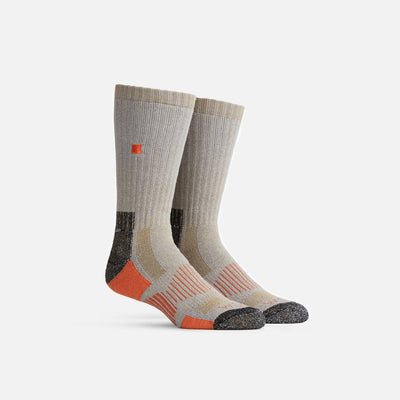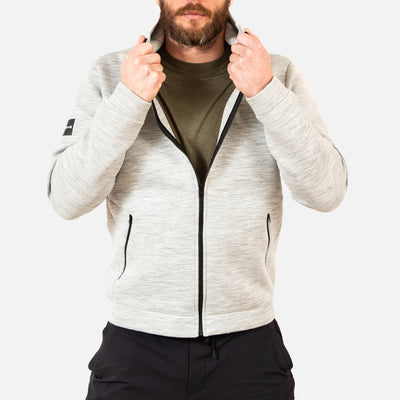Buying Habits: Why Your Socks Have Holes

Wouldn't it be great if we all had the time in our day -- and in our lives -- to focus energy on every decision and make sure it's the best choice for ourselves. Imagine how productive, how healthy, and how generally positive we would all be.
The unfortunate truth is that most of us find ourselves in some form of the proverbial rat race, burning through each set of 24 hours just trying to feel "caught up" enough to keep the pattern intact. It's why we choose a $5 cup of coffee or environmentally-unfriendly coffee pods instead of brewing a more efficient (in both senses) pot every morning. It's why we step on the gas to just barely beat that red light instead of softly rolling to stop and waiting that next 90 second cycle.
And, perhaps less noticeably, it's why we rarely stop and dedicate any of our mental bandwidth to questioning our habits that just seem to get the job done well enough.
The Dangers of Habits
Habitual behaviors take many forms. They're often viewed and positive or negative, but even that can be a little too black and white. Is a habit of running five miles per day a good habit? Sure, if you're taking proper care of your conditioning and nutrition in other respects. If not, you might just be increasing the risk of serious injury.
That said, it's both impractical and unnecessary to suggest all habits are bad or need constant re-evaluation. Rather, just some periodic self-reflection may help to identify detrimental habits without being a resource hog on your already-overworked brain.
I'd like to offer one type of habit to get in the hab--- sorry, to remind yourself to review regularly, and a specific example of something that so few of us have really thought about.
Let's talk about buying habits. And let's look in your sock drawer.
Identifying Buying Habits
When I go to the grocery store and I see that my wife put "Kefir" on the list, I know, without thinking, that she means the big bottle of Lifeway brand strawberry-flavored kefir. This is her variety of choice. Many items on your grocery lists probably represent similar shorthand for known buying habits.
This is a great process for saving time and preventing confusion. It's also a terrible process for discovering new items and new varieties that you might like even better. It's a tradeoff.
There are tons of resources for businesses to help figure out their customers' buying habits. In fact, if you Google "identifying buying habits," nearly all of the results you'll find are geared toward businesses and not toward you, the buyer.
So, how can you identify and evaluate your own buying habits? Here are a few ways:
- Grab a notepad. Walk around your living space and jot dot 5-10 things you see that you always buy the same way (same brand, same retailer, etc.). Is it worth trying something different, or at least researching some of the competitor products?
- Look in your browser and search history. Yes, it exists for more reasons than just to get you in trouble. See what things you search when you're looking to make a purchase. What types of options might your searches inadvertently exclude?
- The next time something breaks, rips, crashes, rusts, or has any other type of damage, put some thought into how you're going to replace it. With the same exact thing? A different brand? A more expensive but longer lasting alternative?
Breaking Up with Cotton
I mentioned wanting to talk about your sock drawer, and here's where I'm going to get back to that. I'm willing to bet that most of the socks in your drawer are made, at least in part, from cotton.
Maybe you have a whole bunch of white cotton socks that you consider your "everyday socks," 10 or so pairs of "business socks," several pairs of those thin, fun-patterned novelty socks, and one or two pairs of your special occasion wool hiking socks.
What if I suggested that most of your socks could (and should) be wool. Is that crazy? Am I being ridiculous?
Above, where I was talking about buying habits, the examples focused on specific products you're comfortable with. Could I convince my wife to switch from Lifeway strawberry kefir to store brand blueberry flavor? It would be tough, but it's possible if I had a case to make.
Well, here I am suggesting to you not only to break up with a brand, color, or flavor, but with an entire commodity. Cotton socks out, wool socks in. It's a tough sell, I get it.
The WORN website has a number of articles offering reasons why wool socks -- and especially WORN's Arrowool™ socks -- are a wise choice for everyday use, but let's focus less on "why wool," and more "why not cotton?"
Cotton socks, generally speaking:
- wear out quickly, developing holes at points of constant friction (e.g. your heel and ball of your foot), and stretch out over time, leading to droopy, bunchy socks;
- retain moisture, trapping sweat on and around your feet, which can be uncomfortable (or even dangerous) in particularly hot or cold climates;
- have a high environmental impact in a variety of ways, ranging from land use to water and energy consumption.
There's more to say about cotton, but those are some key points that, I hope, at least justify taking some time to evaluate whether the socks you're buying are the socks you really want to buy.
Change Your Fashion Habits. Change the World.
Not everyone is going to make the decision to eliminate, or even reduce, the presence of cotton in their sock drawer. I think the ones who do will wish the idea had occurred to them sooner. But there's the bigger picture to consider as well.
Wool socks are more sustainable and data shows that reducing cotton farming and replacing it with wool farming will have a net positive environmental impact. One single person's decision to make the change might not push the needle all the way to where it needs to be, but every little bit helps. And the fact that making the change is a cost-efficient and comfort-positive one means this is a buying habit change that can have a serious impact.
















